FDA Draft Substantiation for StructureFunction Claims Made in Infant Formula Labels and Labeling
标准简介
Draft Substantiation for StructureFunction Claims Made in Infant Formula Labels and Labeling[附网盘链接]是于不久之前发布的FDA标准,适用于美国。标准截图
![Draft Substantiation for StructureFunction Claims Made in Infant Formula Labels and Labeling[附网盘链接]](/img/202109141037283f4ho.jpg)
标准文档说明
标准文档类型为Draft Substantiation for StructureFunction Claims Made in Infant Formula Labels and Labeling[附网盘链接]高清PDF版本(文字版),标准文档内可进行搜索,可以复制原文,可粘贴。标准部分原文
Draft-Not for Implementation Substantiation for Structure/Function Claims Made in Infant Formula Labels and Labeling 1
Guidance for Industry This draft guidance, when finalized, will represent the current thinking of the Food and Drug Administration (FDA or we) on this topic. It does not establish any rights for any person and is not binding on FDA or the public. You can use an alternative approach if it satisfies the requirements of the applicable statutes and regulations. To discuss an alternative approach, contact the FDA staff responsible for this guidance as listed on the title page. I. Introduction This guidance document describes the type and quality of evidence that the Food and Drug Administration (FDA or we) recommends infant formula manufacturers and distributors have to substantiate claims about effects on the structure or function of the body (“structure/function 2
claims”) made on the label and in other labeling of nonexempt and exempt infant formulas. The purpose of this guidance document is to help infant formula manufacturers and distributors making structure/function claims to comply with the statutory requirement that all claims in food labeling must be truthful and not misleading under section 403(a)(1) of the Federal Food, Drug, and Cosmetic Act (FD&C Act) (21 U.S.C. 343(a)(1)). FDA regulates infant formula under the FD&C Act. Section 201(z) of the FD&C Act (21 U.S.C. 321(z)) defines “infant formula” as “a food which purports to be or is represented for special dietary use solely as a food for infants by reason of its simulation of human milk or its suitability as a complete or partial substitute for human milk.” FDA regulations in Title 21 of the Code of Federal Regulations (21 CFR) define the term “infant” as “a person not more than 12 months old” (21 CFR 106.3). Although human milk is the recommended source of nutrition for infants (Ref. 1), infant formula nonetheless provides the sole source of nutrition for many infants during a vulnerable period of life when diet plays a critical role in affecting long-term growth and development. 1
This guidance has been prepared by the Office of Nutrition and Food Labeling in the Center for Food Safety and Applied Nutrition at the U.S. Food and Drug Administration. 2
Nonexempt infant formulas are represented and labeled for use by healthy, full-term infants. Such formulas are subject to the requirements set forth in section 412(a), (b), and (c) of the FD&C Act (21 U.S.C. 350a(a), (b), and (c)). Exempt infant formulas are represented and labeled for use by infants who have an inborn error of metabolism or low birth weight or who otherwise have an unusual medical or dietary problem. Under section 412(h) of the FD&C Act (21 U.S.C. 350a(h)), these infant formulas are exempt from the requirements of section 412(a), (b), and (c) of the FD&C Act; exempt infant formulas are, however, subject to the requirements of 21 CFR part 107, subpart C, Exempt Infant Formulas. 3
网盘链接
百度网盘:https://pan.baidu.com/s/1P49Sl-7TKzTIlUfrWvYcIQ
提取码:1x2c
【温馨提示】大资料ISO是提供信息发布的专业信息类网站,所有内容均由用户发布,不代表本站观点,本站亦不存储所涉及的文件及资料。如有【免费资料】以及【付费资料】,请用户根据自己的需求,自行判断是否需要获取。如有交易诈骗、内容侵权可发送邮件至kf@dzl100.com,我们审查后若发现情况属实,会立即对相关内容进行删除处理。
加载用时:62.5258 毫秒
相关评论
相关文章
-

FDA Draft Substantiation for StructureFunction Claims Made in Infant Formula Labels and Labeling
Draft Substantiation for StructureFunction Claims Made in Infant Formula Labels and Labeling[附网盘链接]是FDA于不久之前发布的FDA标准,适用于美国。本次分享的标准文档为高清PDF(文字版),标准文档内可搜索,可复制,可粘贴。本文结尾附网盘链接。
-
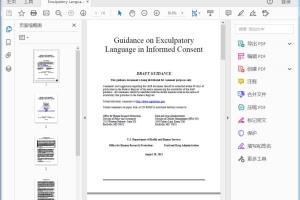
FDA Exculpatory Language in Informed Consent
Exculpatory Language in Informed Consent[附网盘链接]是FDA于不久前发布的FDA标准,适用于美国。本次分享的标准文档为高清PDF(文字版),标准文档内可搜索,可复制,可粘贴。本文结尾附网盘链接。
-
![CVM GFI #185 (VICH GL43) Target Animal Safety for Veterinary Pharmaceutical Products.pdf[网盘链接]](/img/small/20210914103659dm8zg.jpg)
CVM GFI #185 (VICH GL43) Target Animal Safety for Veterinary Pharmaceutical Products.pdf[网盘链接]
GFI #185 (VICH GL43) Target Animal Safety for Veterinary Pharmaceutical Products.pdf是于发布的标准,适用于。本次分享的标准文档为高清PDF(文字版),标准文档内可搜索,可复制,可粘贴。本文结尾附网盘链接。
-

FDA Allowable Excess Volume and Labeled Vial Fill Size in Injectable Drug and Biological Products
Allowable Excess Volume and Labeled Vial Fill Size in Injectable Drug and Biological Products[附网盘链接]是Food And Drug Administration于不久之前发布的FDA标准,适用于US。本次分享的标准文档为高清PDF(文字版),标准文档内可搜索,可复制,可粘贴。本文结尾附网盘链接。
-
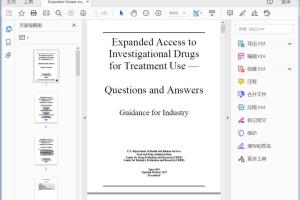
FDA Expanded Access to Investigational Drugs for Treatment Use - Questions and Answers
Expanded Access to Investigational Drugs for Treatment Use - Questions and Answers[附网盘链接]是Food&Drug Administration于不久前发布的FDA标准,适用于U.S。本次分享的标准文档为高清PDF(文字版),标准文档内可搜索,可复制,可粘贴。本文结尾附网盘链接。
-
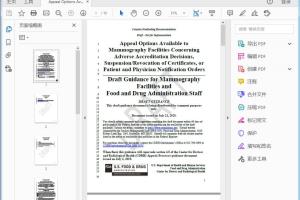
FDA Adverse Accreditation Decisions, SuspensionRevocation of Certificates, or Patient and Physician Notification Orders Draft
Adverse Accreditation Decisions, SuspensionRevocation of Certificates, or Patient and Physician Notification Orders Draft[附网盘链接]是Food And Drug Administration于不久之前发布的FDA标准,适用于United States。本次分享的标准文档为高清PDF(文字版),标准文档内可搜索,可复制,可粘贴。本文结尾附网盘链接。
-
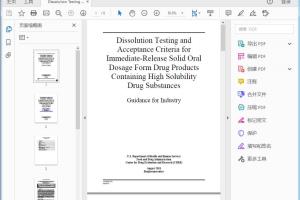
FDA Dissolution Testing and Acceptance Criteria for Immediate-Release Solid Oral Dosage Form Drug Products Containing High Solubility Drug Substances
Dissolution Testing and Acceptance Criteria for Immediate-Release Solid Oral Dosage Form Drug Products Containing High Solubility Drug Substances[附网盘链接]是FDA于过去发布的FDA标准,适用于美国。本次分享的标准文档为高清PDF(文字版),标准文档内可搜索,可复制,可粘贴。本文结尾附网盘链接。
-

FDA Clinical Pharmacology Labeling for Human Prescription Drug and Biological Products — Content and Format
Clinical Pharmacology Labeling for Human Prescription Drug and Biological Products — Content and Format[附网盘链接]是Food And Drug Administration于当前发布的FDA标准,适用于United States。本次分享的标准文档为高清PDF(文字版),标准文档内可搜索,可复制,可粘贴。本文结尾附网盘链接。
-
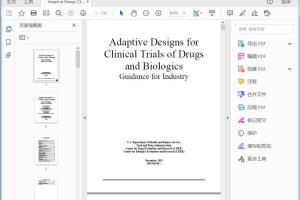
FDA Adaptive Design Clinical Trials for Drugs and Biologics Guidance for Industry
Adaptive Design Clinical Trials for Drugs and Biologics Guidance for Industry[附网盘链接]是FDA于过去发布的FDA标准,适用于美国。本次分享的标准文档为高清PDF(文字版),标准文档内可搜索,可复制,可粘贴。本文结尾附网盘链接。
-

FDA Compliance Policy for the Quantity of Bioavailability and Bioequivalence Samples Retained Under 21 CFR 320.38(c)
Compliance Policy for the Quantity of Bioavailability and Bioequivalence Samples Retained Under 21 CFR 320.38(c)[附网盘链接]是FDA于不久前发布的FDA标准,适用于U.S。本次分享的标准文档为高清PDF(文字版),标准文档内可搜索,可复制,可粘贴。本文结尾附网盘链接。
-

FDA Coronary Drug-Eluting Stents — Nonclinical and Clinical Studies -Companion Document
Coronary Drug-Eluting Stents — Nonclinical and Clinical Studies -Companion Document[附网盘链接]是FDA于当前发布的FDA标准,适用于美国。本次分享的标准文档为高清PDF(文字版),标准文档内可搜索,可复制,可粘贴。本文结尾附网盘链接。
-

FDA Chronic Hepatitis D Virus Infection Developing Drugs for Treatment Guidance for Industry
Chronic Hepatitis D Virus Infection Developing Drugs for Treatment Guidance for Industry[附网盘链接]是Food&Drug Administration于当前发布的FDA标准,适用于United States。本次分享的标准文档为高清PDF(文字版),标准文档内可搜索,可复制,可粘贴。本文结尾附网盘链接。
-

FDA Converting Units of Measure for Folate, Niacin, and Vitamins A, D, and E on the Nutrition and Supplement Facts Labels
Converting Units of Measure for Folate, Niacin, and Vitamins A, D, and E on the Nutrition and Supplement Facts Labels[附网盘链接]是Food And Drug Administration于不久前发布的FDA标准,适用于US。本次分享的标准文档为高清PDF(文字版),标准文档内可搜索,可复制,可粘贴。本文结尾附网盘链接。
-

FDA Assay Migration Studies for In Vitro Diagnostic Devices Guidance for Industry and FDA Staff
Assay Migration Studies for In Vitro Diagnostic Devices Guidance for Industry and FDA Staff[附网盘链接]是FDA于过去发布的FDA标准,适用于United States。本次分享的标准文档为高清PDF(文字版),标准文档内可搜索,可复制,可粘贴。本文结尾附网盘链接。
-
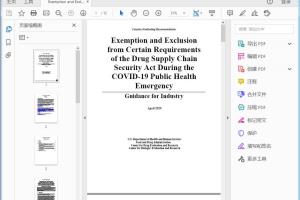
FDA Exemption and Exclusion from Certain Requirements of the Drug Supply Chain Security Act During the COVID-19 Public Health Emergency
Exemption and Exclusion from Certain Requirements of the Drug Supply Chain Security Act During the COVID-19 Public Health Emergency[附网盘链接]是Food And Drug Administration于当前发布的FDA标准,适用于United States。本次分享的标准文档为高清PDF(文字版),标准文档内可搜索,可复制,可粘贴。本文结尾附网盘链接。